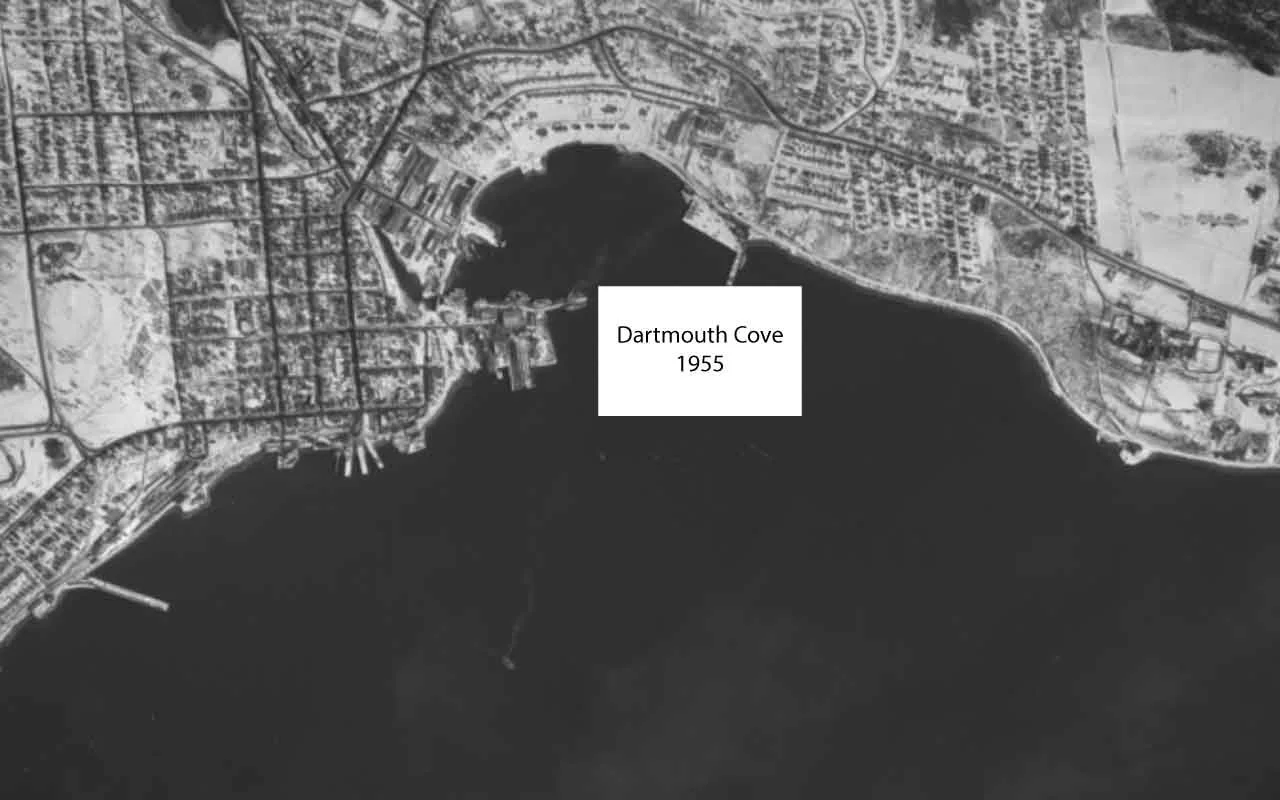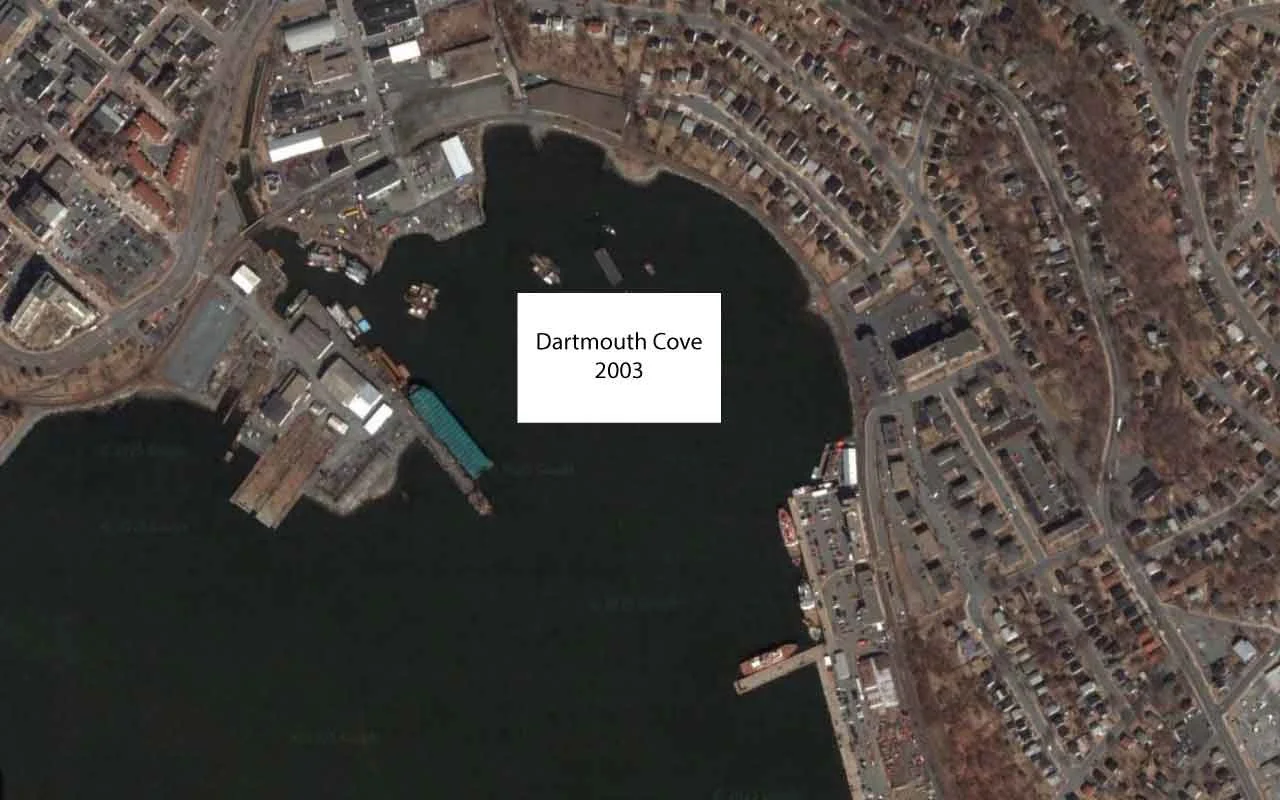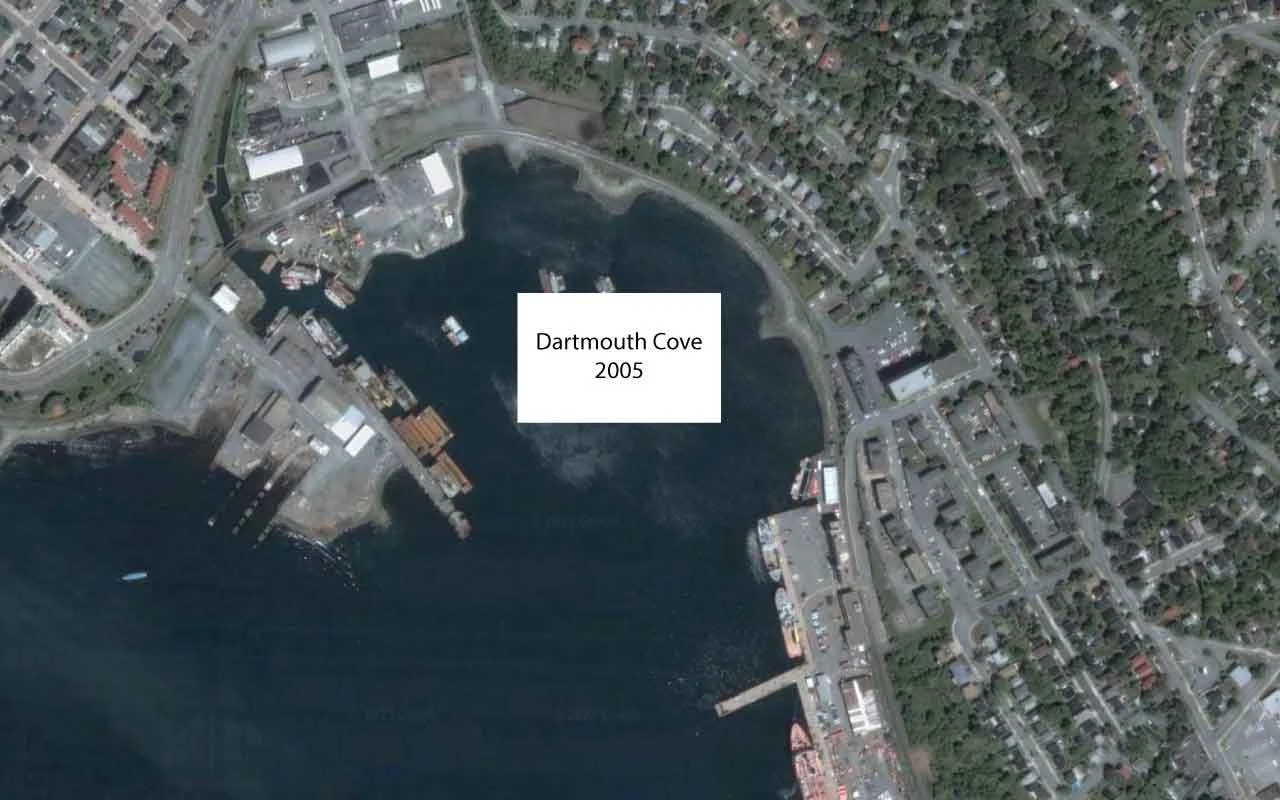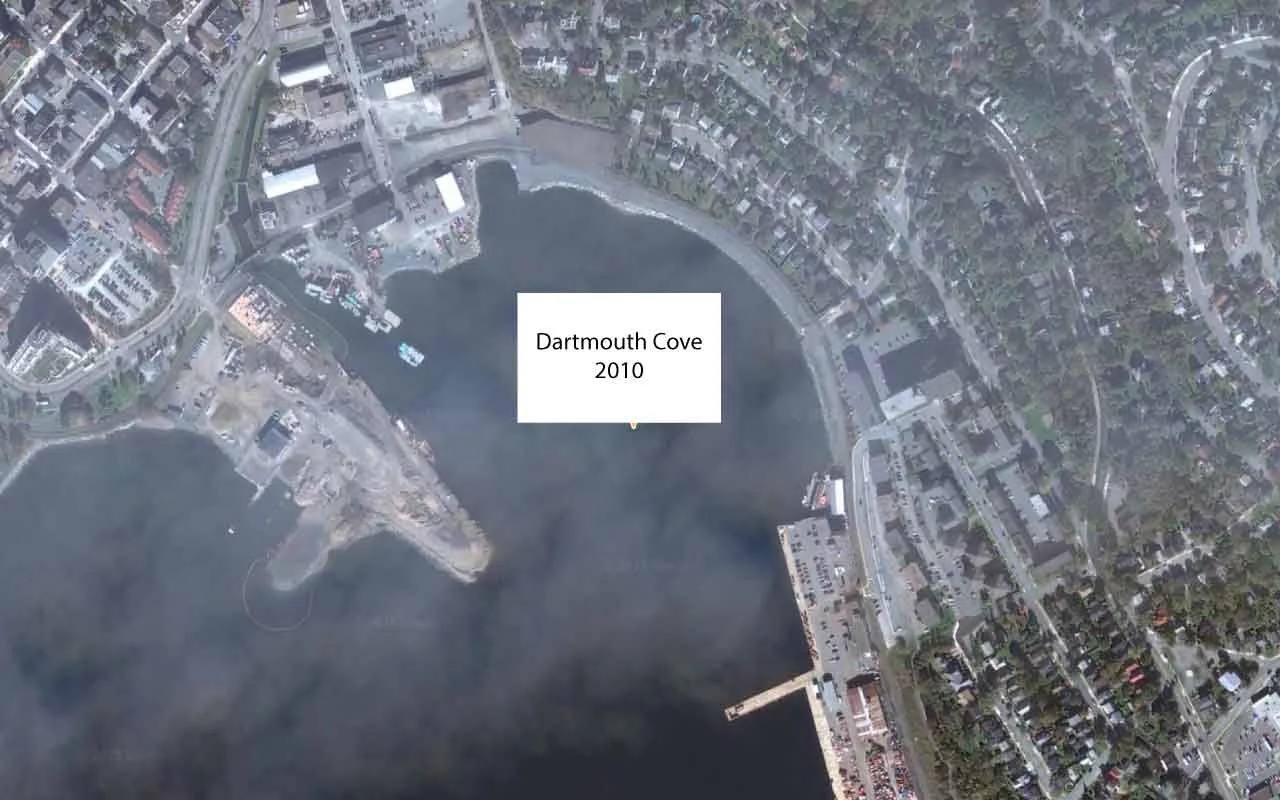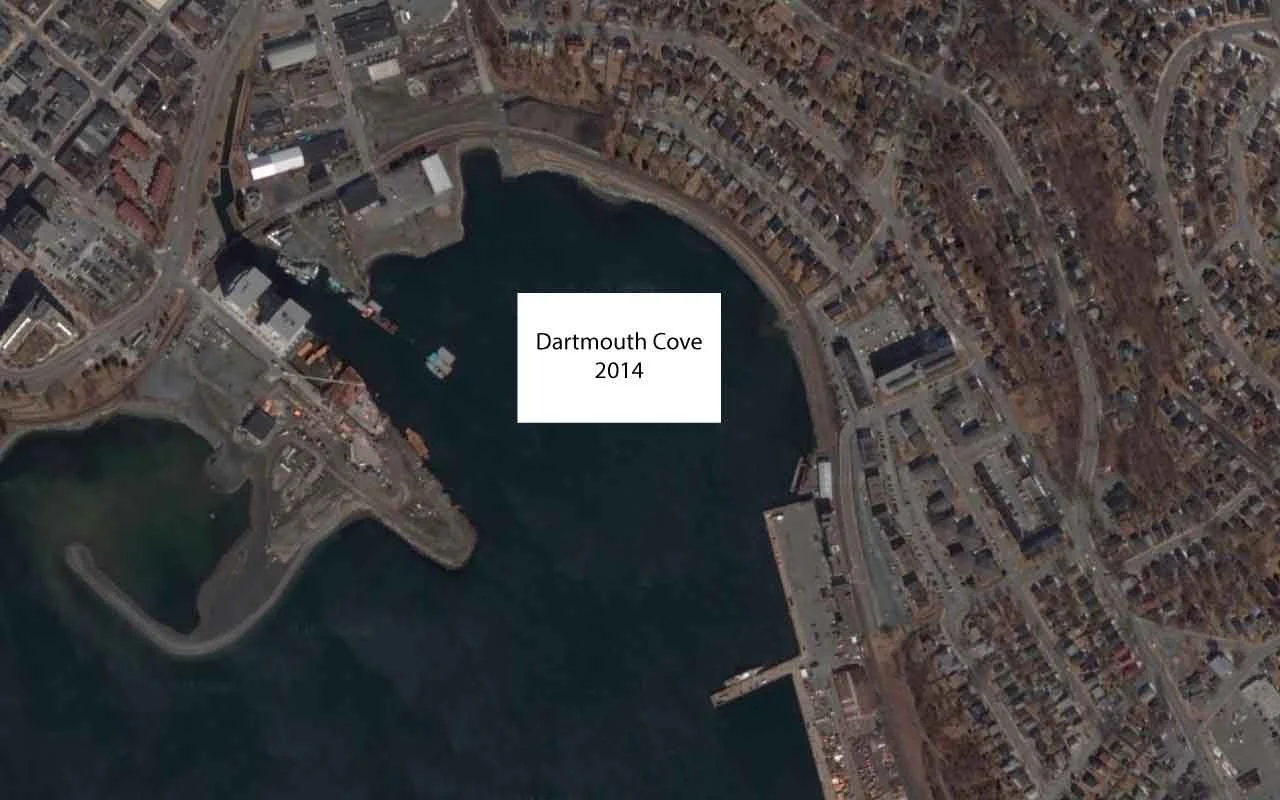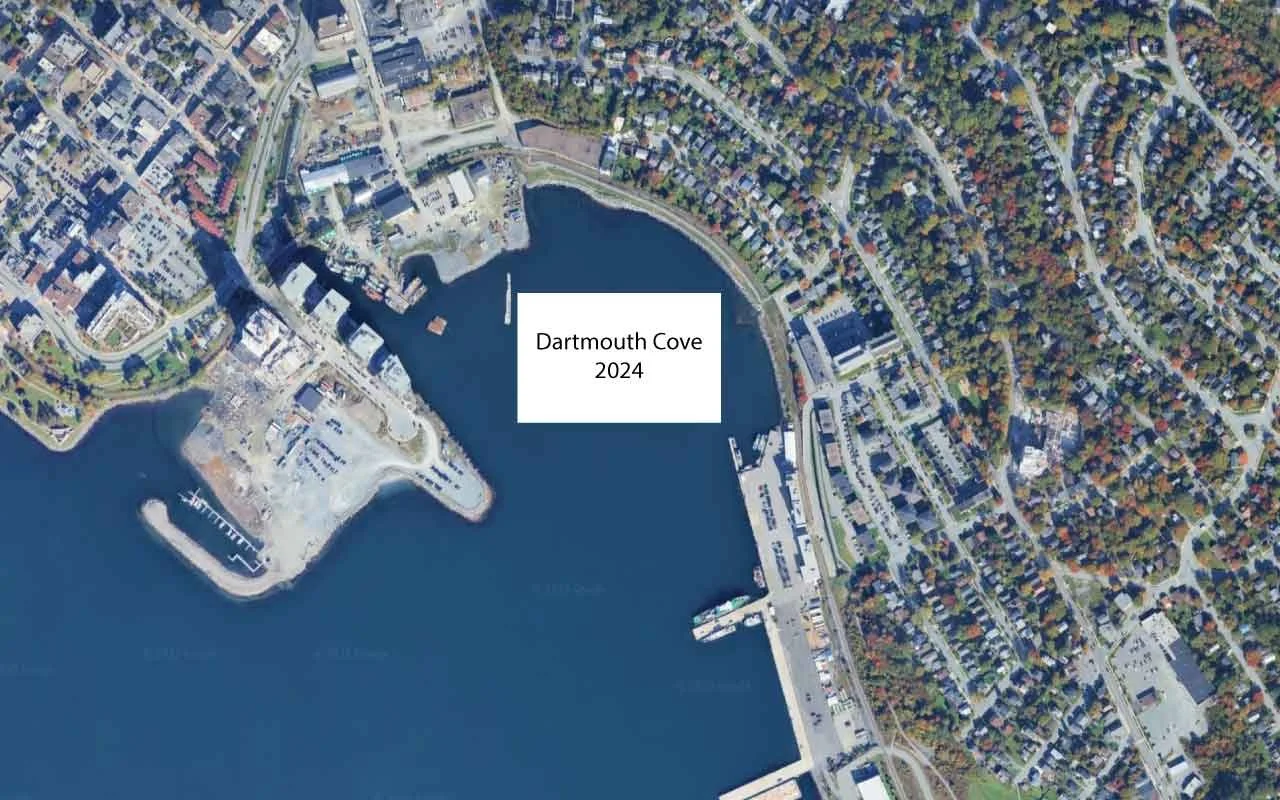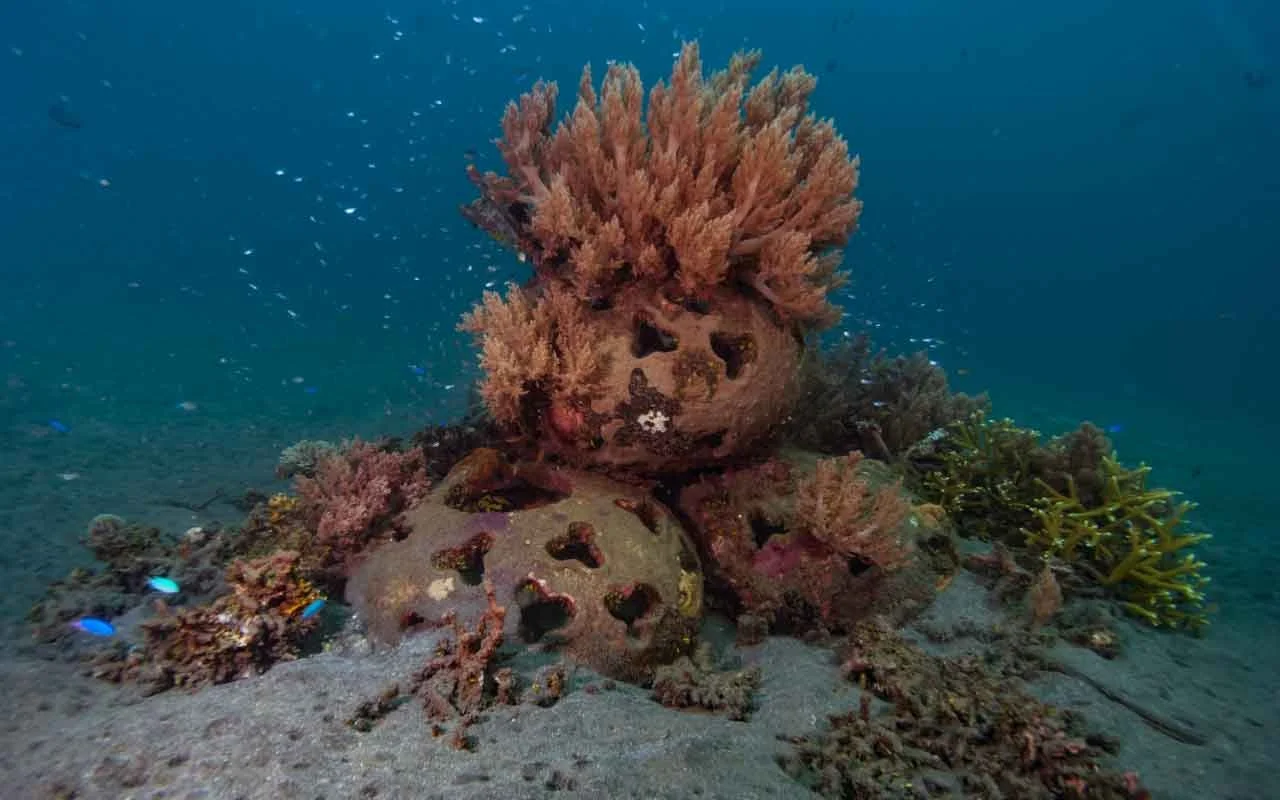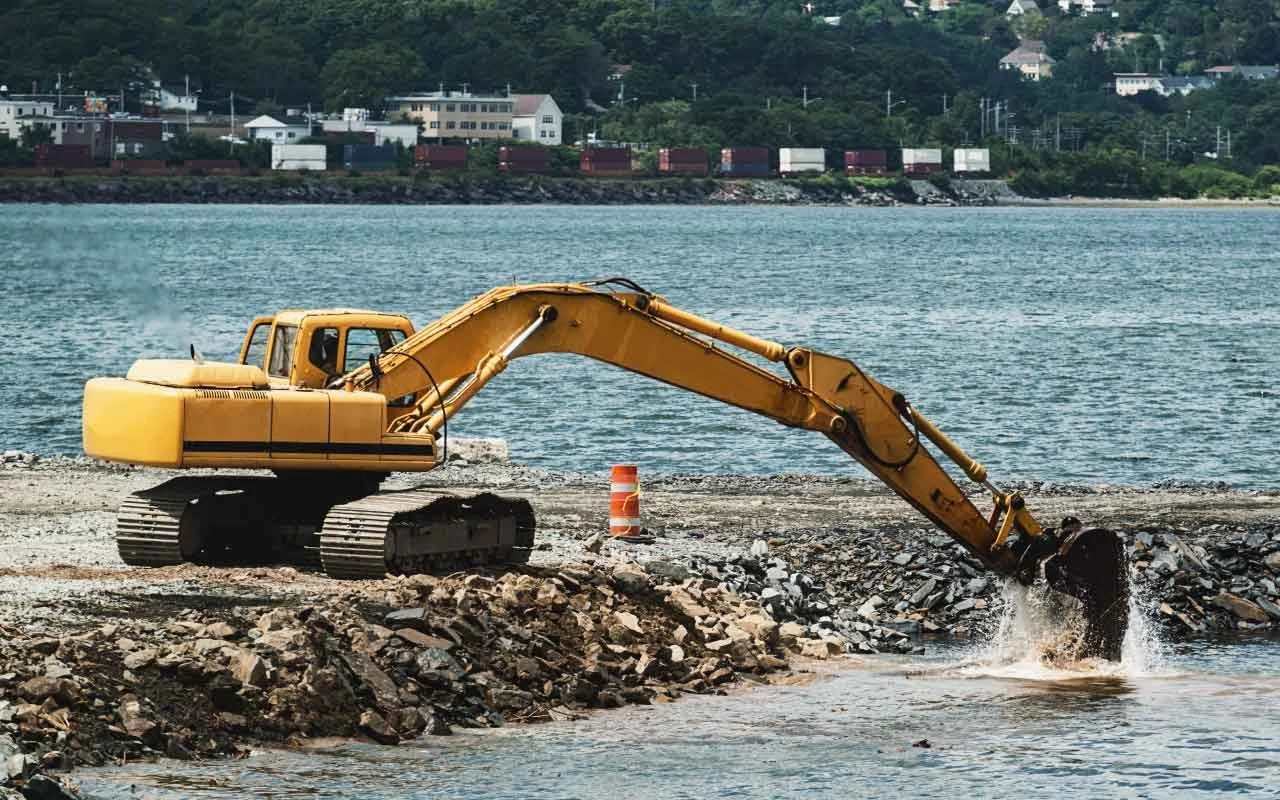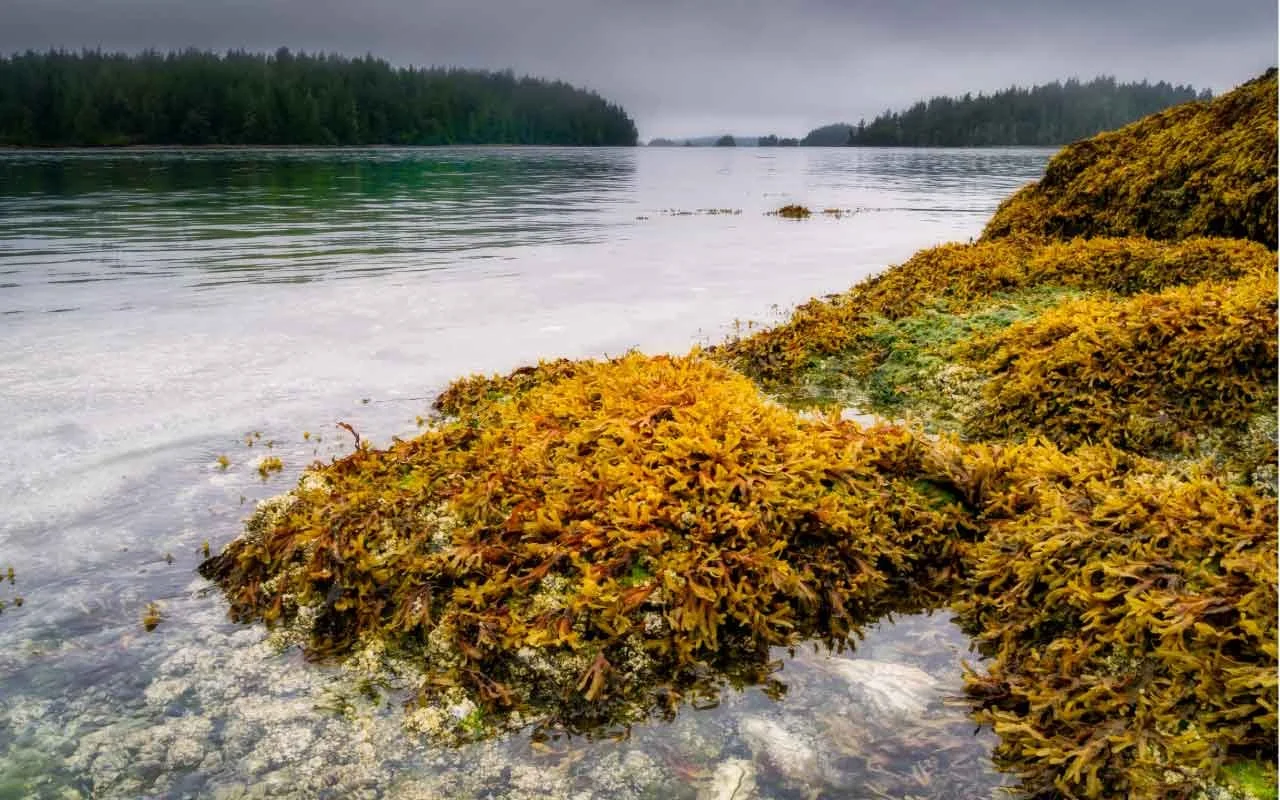Save Dartmouth Cove
Let’s reverse the harsh legacy of dumping in Dartmouth Cove, together.
A HISTORY OF DUMPING IN DARTMOUTH COVE
In 1955 Dartmouth Cove was well on its way to become a toxic dumping ground.
In this photo, only a small portion of land for what will become the Coast Guard property (and later COVE) has been infilled along the eastern entrance to Dartmouth Cove.
Sewage, industrial waste like heavy metals and more are already dumping into Dartmouth Cove.
On the left we see what will become Kings Wharf over 50 years later.
By 2003, just before Kings Wharf enters construction, a great deal of infilling can be seen in Dartmouth Cove.
The Coast Guard buildings are present, built atop in-fill on the right. Infill has also occurred behind what will become Kings Wharf.
Sewage pours into Dartmouth Cove from an outflow pipe while none of the infilling seen here includes any remediation or habitat restoration - a sad reality that will continue for two more decades.
By 2005 Kings Wharf enters into early construction and infilling plans for the massive project begin to take shape.
While revitalizing Downtown Dartmouth and strengthening the community is a priority, restoring or saving Dartmouth Cove is not a focus or outcome of this infilling.
Look closely, by 2010 not only can Kings Wharf infilling be seen in Dartmouth Cove but other new infilling has occurred - between the train tracks and the water a new trail has been established atop infill.
This infilling is part of a major win for Dartmouth Cove. As of 2009 raw sewage is no longer dumping directly into the cove!
Unfortunately, the infilling did not include proactive remediation solutions that could have helped rehabilitate Dartmouth Cove.
As you can see, by 2014 Kings Wharf infilling into Dartmouth Cove has made major progress - yet is still far from its final state.
The former Coast Guard space lies vacant in 2014. No efforts to restore or rehabilitate Dartmouth Cove exist in 2014.
There is no public call to Save Dartmouth Cove, despite significant more infilling to come.
A decade later, in 2024, we can see important infill projects have been completed with no cove remediation or restoration solutions included in this infilling.
Translation? No plan to save Dartmouth Cove.
Kings Wharf, by 2024, has largely completed its giant infill operation while Dominion Diving has expanded its reach into the Cove as well.
The former Coast Guard space has come back to life thanks to investment in COVE.
2022
A CHANCE TO SAVE DARTMOUTH COVE
In 2022, an opportunity to acquire a pre-confederation lot that extends into Dartmouth Cove presents itself - perfect for infilling with pyritic slate, a rock that needs to be neutralized by and stored in salt water.
ONE DARTMOUTH COVE begins developing a plan to infill with purpose.
The vision?
Enable future housing and infrastructure development in Dartmouth while saving Dartmouth Cove through proven remediation centric infill and habitat renewal practices.
THREE KEY STEPS Saving the Dartmouth Cove Marine Ecosystem
Cap 6-feet of toxic sludge and 100+ years of pollution
STEP 01
ONE DARTMOUTH COVE has worked for two years with DFO Scientists, marine biologists, environmental professionals and key regulatory bodies to find a long-term solution for saving Dartmouth Cove.
A dumping ground for sewage, industrial waste and who knows what else - step one is capping the 6+ feet of toxic sludge found in Dartmouth Cove with pyritic slate from nearby housing projects.
Infilling with nearby pyritic slate, unearthed during excavations, will reduce the cost to build housing in Dartmouth (reduced trucking costs) while also sealing in over 100 years of pollution so it can no longer kill off fish and other marine habitat.
Build and install artificial reef to re-establish fish habitat
STEP 02
Once toxins leaching into the water are sealed, the rehabilitation can really get going.
Fish need a clean habitat, including ample vegetation, to prepare for their journey to spawning grounds up-river.
ONE DARTMOUTH COVE is investing in building and installing a proven artificial reef system that is already at work elsewhere in Halifax.
This reef will accelerate Dartmouth Cove rehabilitation by providing habitat for marine life.
Finish the entire coastline with a Rockweed Beach
STEP 03
Unlike most of the infill projects along Halifax Harbour, ONE DARTMOUTH COVE intends to complete a rockweed beach along the entire length of the newly formed intertidal area (the area that is covered at high tide and less covered at low tide).
Rockweed is a “foundation species,” meaning its presence in an ecosystem creates a complex and diverse array of long-term benefits.
Nutrients from Rockweed are key to revitalizing habitat, creating food, safety and a habitat that will continue to rehabilitate Dartmouth Cove for generations to come.


